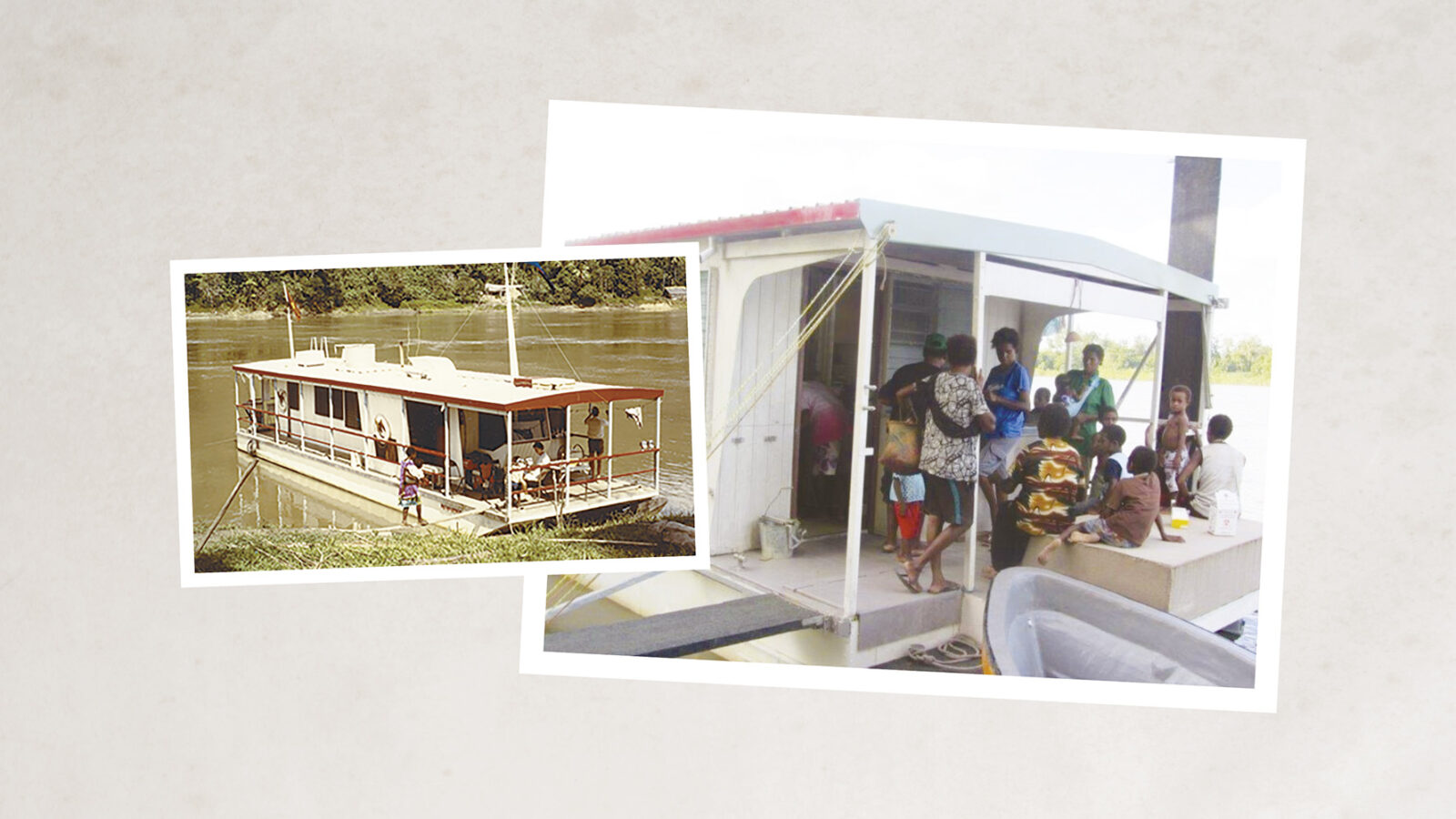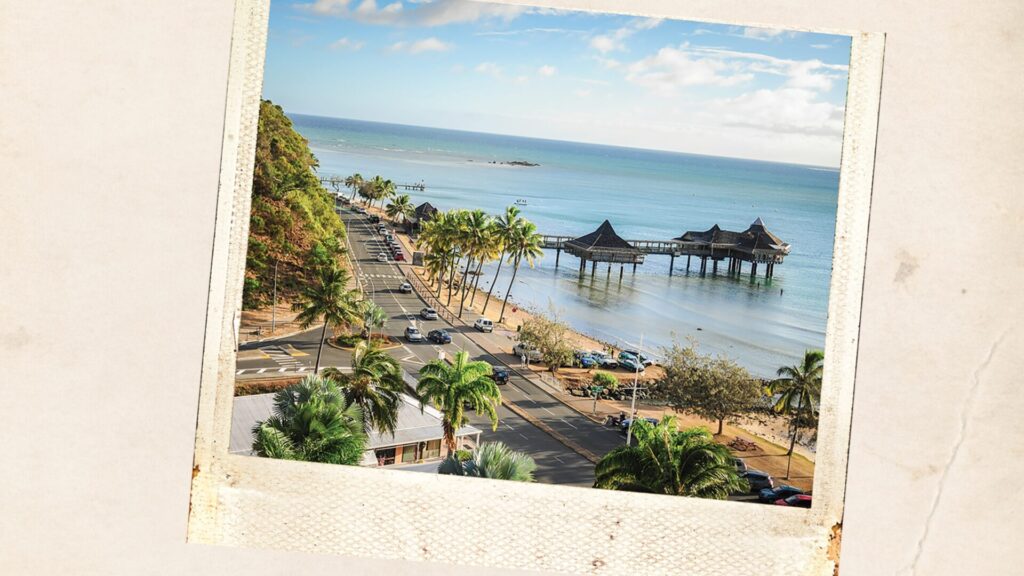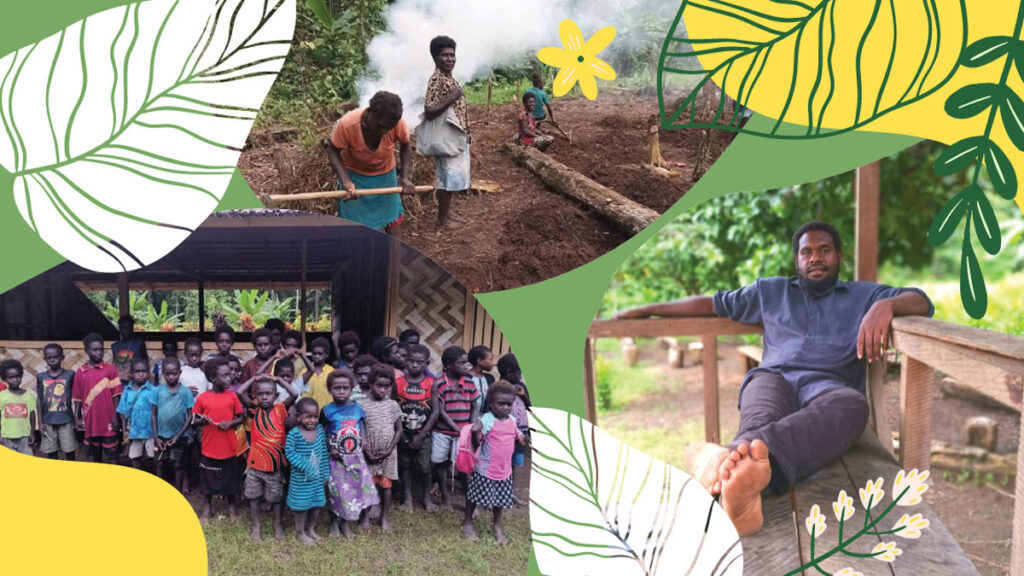When the Seventh-day Adventist Church commenced medical missionary work along the Sepik River in Papua New Guinea, it was almost impossible to accomplish very much because the mode of travel was not satisfactory. A log dugout canoe with an outboard motor was the only means of transportation. In 1964 an offering was collected by Seventh-day Adventist youth around Australia so that a houseboat could be constructed to serve as a floating clinic.
The Pathfinder was constructed in Papua New Guinea over nine months and was dedicated in August 1965. It was given the name Pathfinder in recognition of the gifts and offerings from the young people to pay for the construction of the boat. The plan was to seal the decks, cover the hulls and provide rubber mountings for the diesel engine; however these plans were not completed due to inadequate funds.
Those working on the boat conducted medical clinics along 400km of the Sepik River. The team vaccinated infants, treated the sick and cared for pregnant women. The tribal groups along the river practised animism, and the team would look for opportunities to share their faith.
When David Lundstrom, the new district director for the area, arrived in April 1966, the boat was not operational and medical staff were using a small plywood boat to make day trips to places close by. Lundstrom made some repairs and sailed the boat to assess its capabilities. He found it would take on considerable amounts of water in the open hulls, and the jet unit propelled only one hull which made steering very difficult. The boat was too unsafe, so it spent 1968 out of the water and did not see further service.
Pathfinder II
On his next trip to Sydney, Lundstrom visited with naval architects to plan a more suitable vessel. The Coral Sea Union Mission (now Papua New Guinea Union Mission) executive committee gave approval for a 52-foot houseboat made from special marine aluminium to be built.
The new boat, Pathfinder II, was well equipped with a room for patient examinations, a kitchen with double bunk beds, a bedroom and a living area with a bathroom. There was plenty of storage in all areas. In the front of the boat behind the steering section were the living quarters for the boat drivers.
In 1972 the Pathfinder II was dedicated. A speed boat was attached to the Pathfinder II so that villages in small offshoots could be reached. To help reduce infant mortality, vaccinations were given against diphtheria, tetanus, whooping cough, tuberculosis and polio. There was a strong focus on the health of pregnant women and their families. Family planning was also offered to those who had several children.
About 1800 children under five years of age and 200 pregnant women were on the medical files at any one time. Each year, all school children in the area received a medical consultation. Leprosy, malaria, tropical ulcers and yaws were just some of the many conditions that were treated.
By the early 1980s, the boat and its ministry of mercy were being cared for by Papua New Guineans. Alice Bora and Rhoda Philip, nursing graduates of Sopas Adventist Hospital, were conducting the medical clinics, and Job Napai was the boat’s captain.
Because of the costs and difficulty of providing adequate maintenance for the boat, the Pathfinder II was not operational between the early 2000s and 2013. In July 2013, a group of eight travelled to make major repairs to the Pathfinder II. It continues to operate, albeit with some challenges.
The medical needs of the people who live along the Sepik River have been served by the Pathfinder floating clinics since 1965. People along the river depend on the visits of the clinic. The name Pathfinder has become synonymous with the spirit of service and holistic ministry that is central to the mission of the Seventh-day Adventist Church.
This excerpt is taken from an article on the online Encyclopedia of Seventh-day Adventists (ESDA). It has been cut down and edited for space and style reasons. Visit encyclopedia.adventist.org/.






